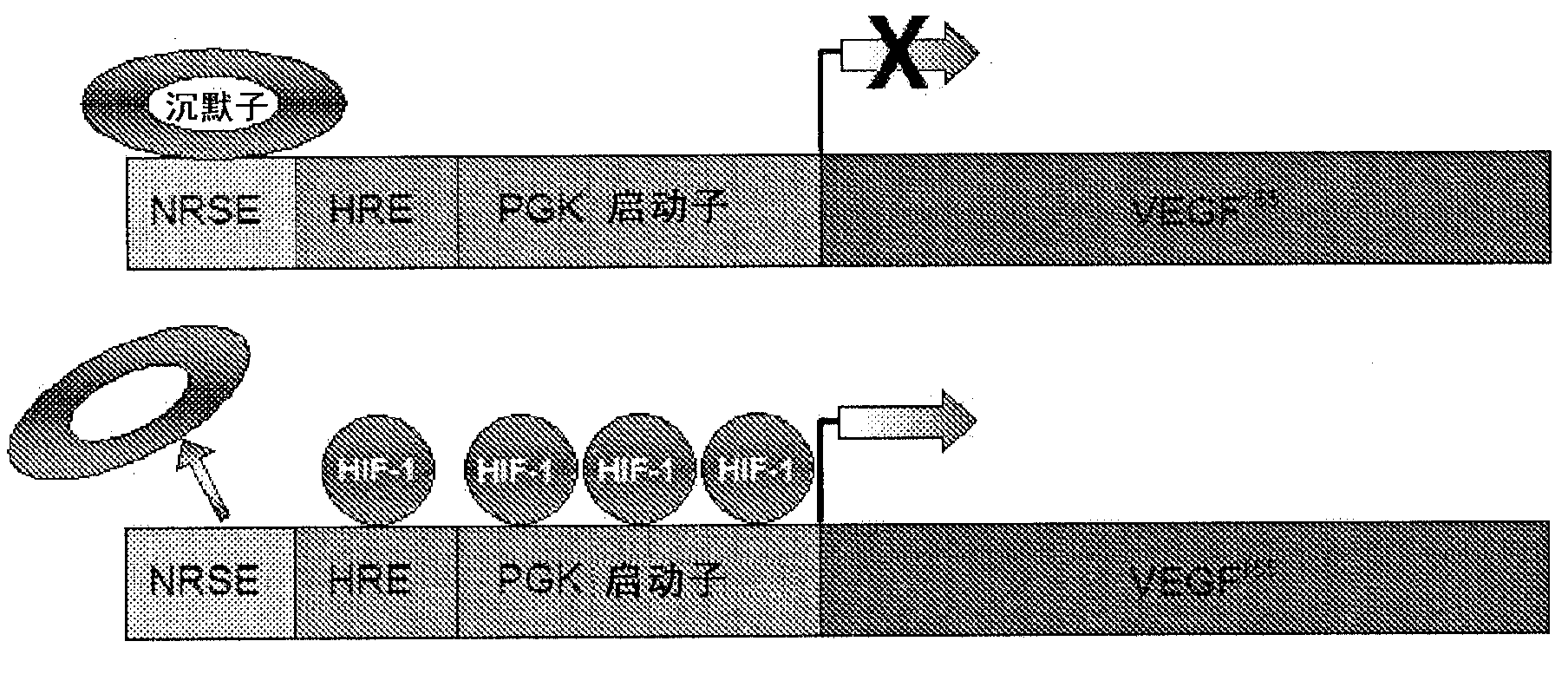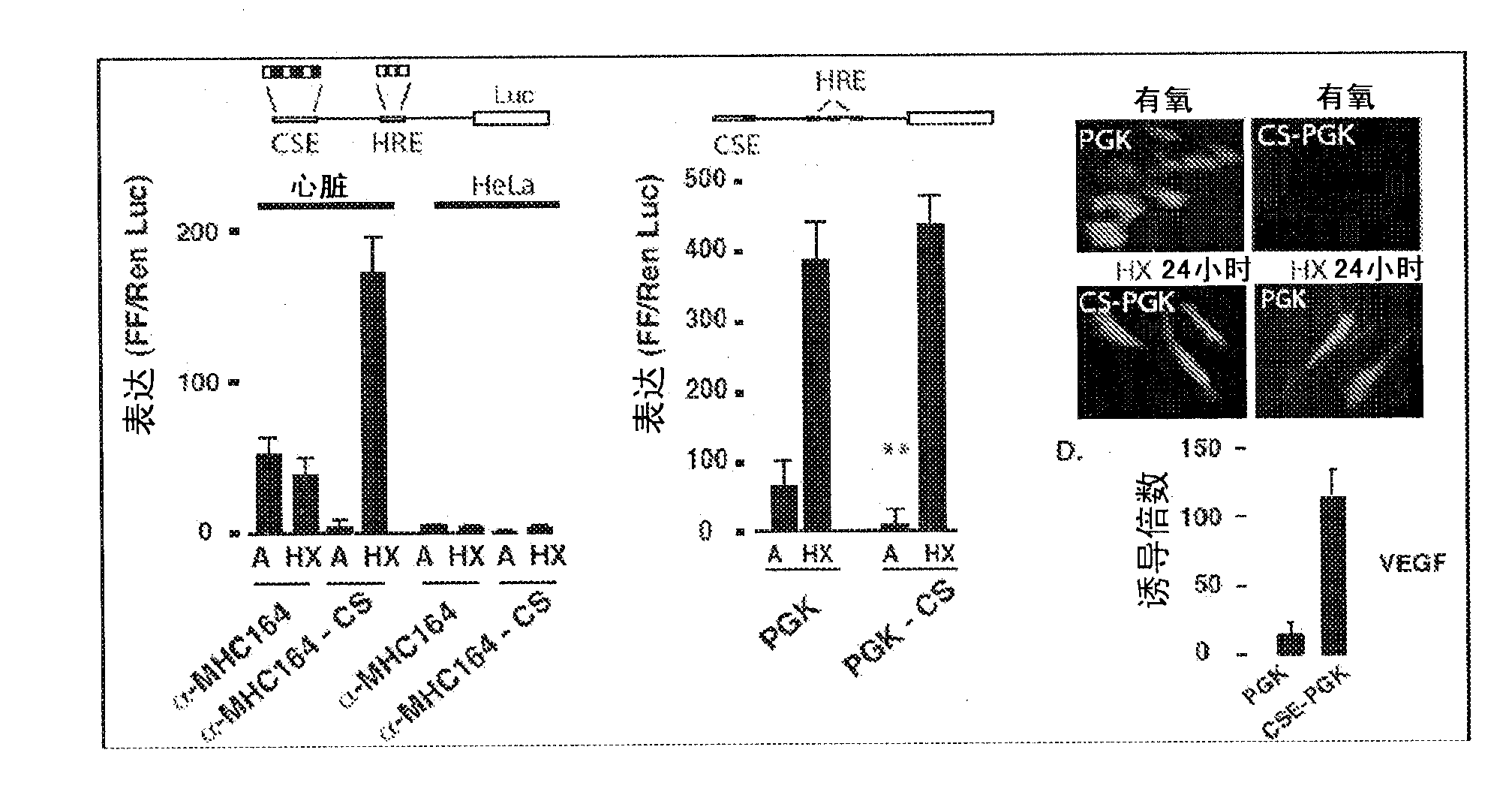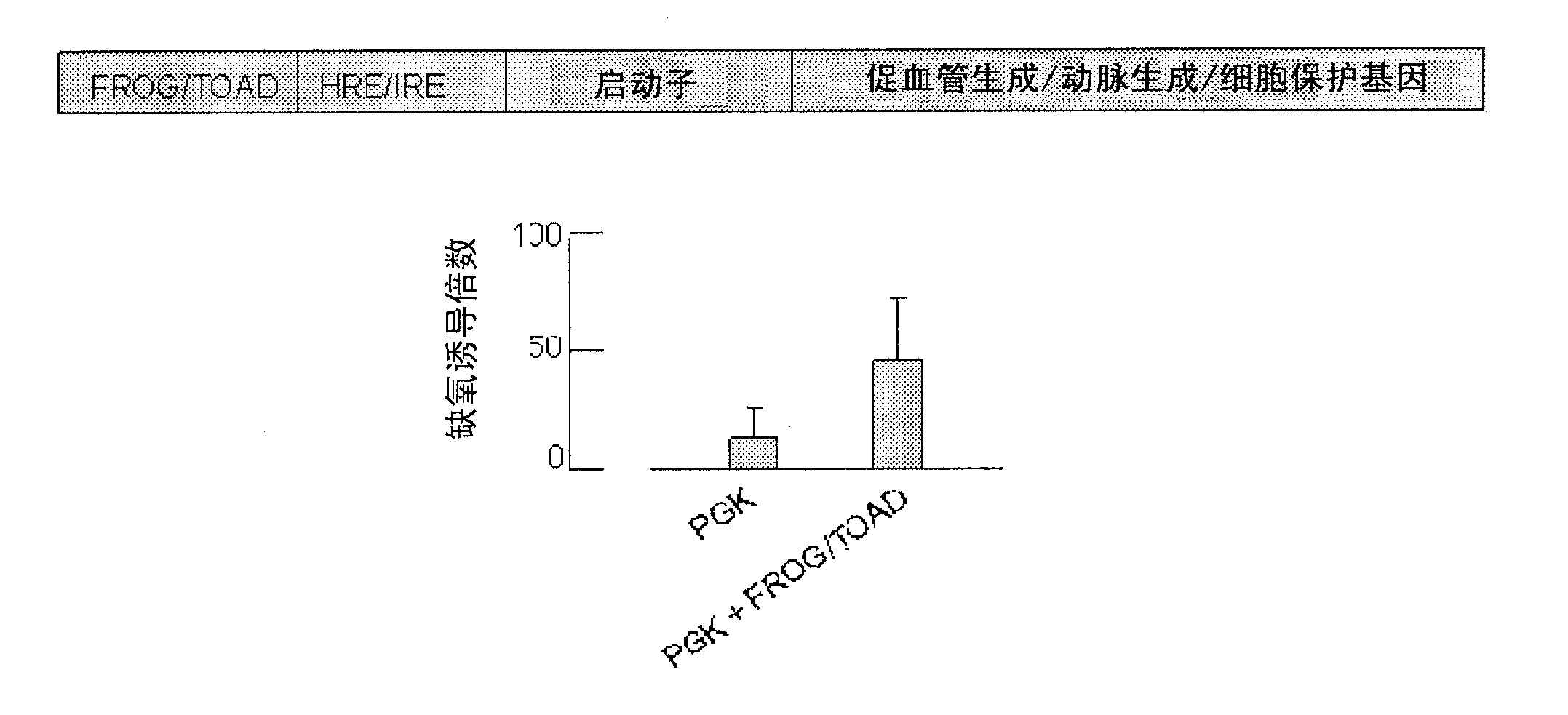Hypoxia regulated conditionally silenced AAV expressing angiogenic inducers
A technology of silencer and growth factor, applied in the direction of angiogenesis factor, growth factor/inducing factor, angiopoietin, etc., can solve the problem of small curative effect and so on
- Summary
- Abstract
- Description
- Claims
- Application Information
AI Technical Summary
Problems solved by technology
Method used
Image
Examples
Embodiment 1
[0125] Example 1: Treatment of angiogenesis, angiogenesis and arteriogenesis in ischemic skeletal muscle with a conditionally silenced AAV9 gene therapy vector expressing human VEGF.
[0126] Hypothesis: Ischemia-regulated promoter-driven semi-permeable, muscle-tropic AAV9 vector delivery of VEGF gene would support directed angiogenesis followed by arteriogenesis and reestablishment of a functional vascular network with stable tissue reperfusion.
[0127] Materials and Methods: A human (h) VEGF gene driven by a PGK promoter containing a tandem array of HIF-Ia and NSF (silencer) binding sites was cloned into an AAV9 vector. Gene expression and regulation quantified in hypoxic skeletal muscle cells and ischemic hindlimbs of normal and atherosclerosis-prone mice. Arteriogenesis and angiogenesis therapy were evaluated in a mouse hindlimb ischemia model by intramuscular delivery of AAV9-CS-VEGF vector.
[0128] Results: The results shown here indicate for the first time that susta...
Embodiment 2
[0133] Example 2: Models of therapeutic angiogenesis
[0134] Expression profiles of conditional silencing gene therapy vectors: Conditional silencing is a new technique developed in this laboratory to provide tighter regulation of ischemic genes. The HIF-1α-binding element (HRE) binds to silencing elements (neuron-responsive silencing element (NRSE) and the non-tissue-specific silencer of the murine Igβ promoter), in tandem arrays upstream of tissue-specific and constitutive promoters. The elements are arranged so that under physiological oxygen tension (normal) the silencing element is active and represses gene expression. Under conditions of tissue hypoxia (or ischemia), HRE sites are activated, resulting in dual induction of the HIF-1 enhancer and repression of silencing elements. The net effect is very low normoxic gene expression strongly induced (>100-fold) by hypoxia. The high inducibility is largely due to the silencing of basal gene expression and does not involve ...
Embodiment 3
[0144] Example 3: Age-associated decline of various pro-angiogenic growth factors, reduced induction of hypoxia-regulated genes, and inhibition of EPC migration.
[0145] Age-Mediated Decline of Angiogenic Growth Factor Gene Expression in Murine BM-MSCs: MSCs can be isolated from tibias and femurs of 2- and 26-month-old mice in MesenCult Medium with MSC Supplement (Stem Cell Technologies) Attach and culture in medium, 4 mice per age group. Cells can be treated and passaged similarly to achieve homogeneity, as determined by FACS analysis of cell surface markers Sca-1, CD44, CD45 and CD11b. All cells were equally capable of differentiating into chondrocytes, bone cells and adipocytes when exposed to appropriate inducers. RNA was purified at 11 passages under the same culture conditions, and transcripts were analyzed by microarray. RT-PCR confirmed alterations in selected growth factor-related gene transcripts. Significant decreases in the following columns: Angiopoietin 2 (3 ...
PUM
 Login to View More
Login to View More Abstract
Description
Claims
Application Information
 Login to View More
Login to View More - Generate Ideas
- Intellectual Property
- Life Sciences
- Materials
- Tech Scout
- Unparalleled Data Quality
- Higher Quality Content
- 60% Fewer Hallucinations
Browse by: Latest US Patents, China's latest patents, Technical Efficacy Thesaurus, Application Domain, Technology Topic, Popular Technical Reports.
© 2025 PatSnap. All rights reserved.Legal|Privacy policy|Modern Slavery Act Transparency Statement|Sitemap|About US| Contact US: help@patsnap.com



